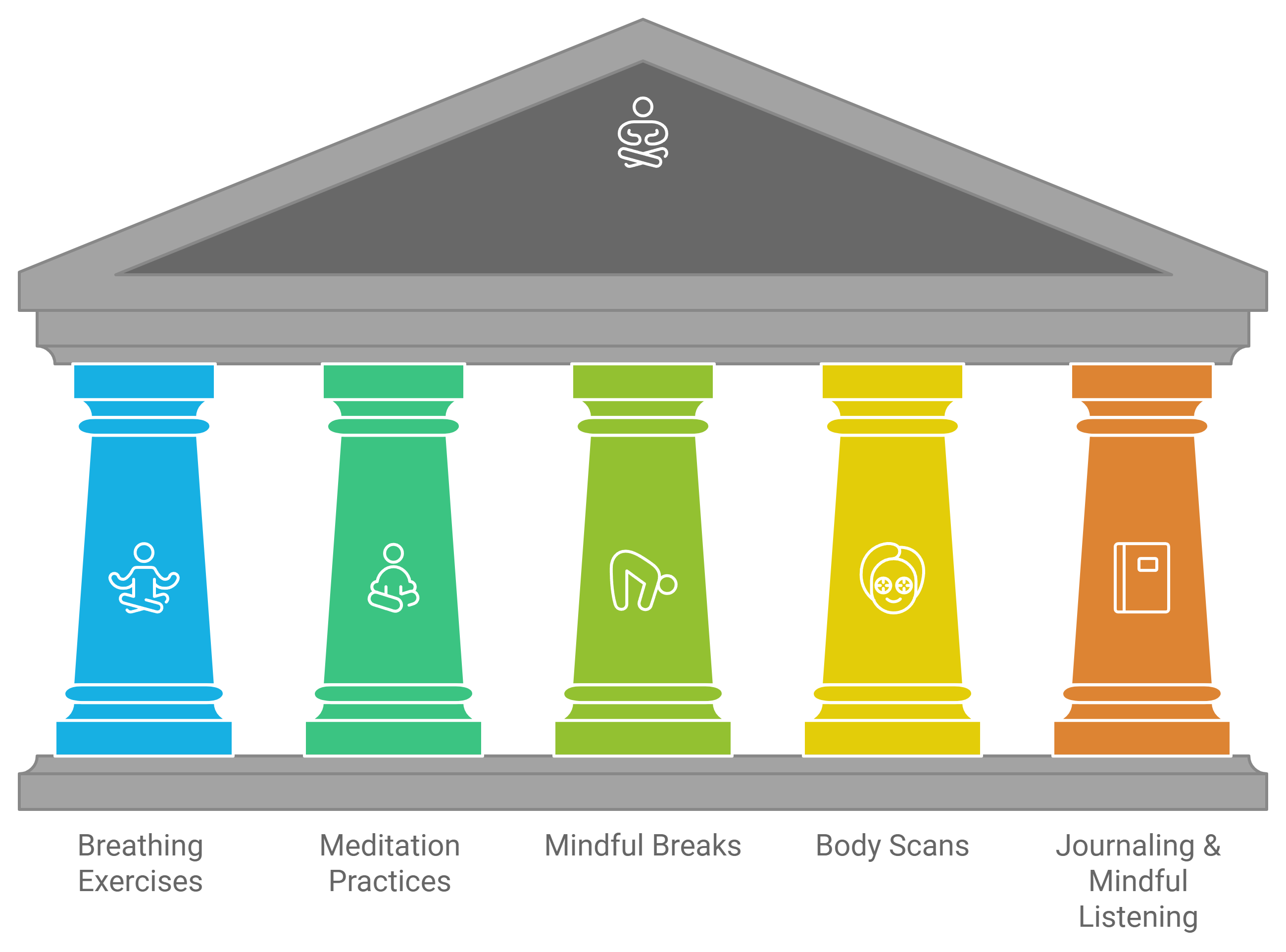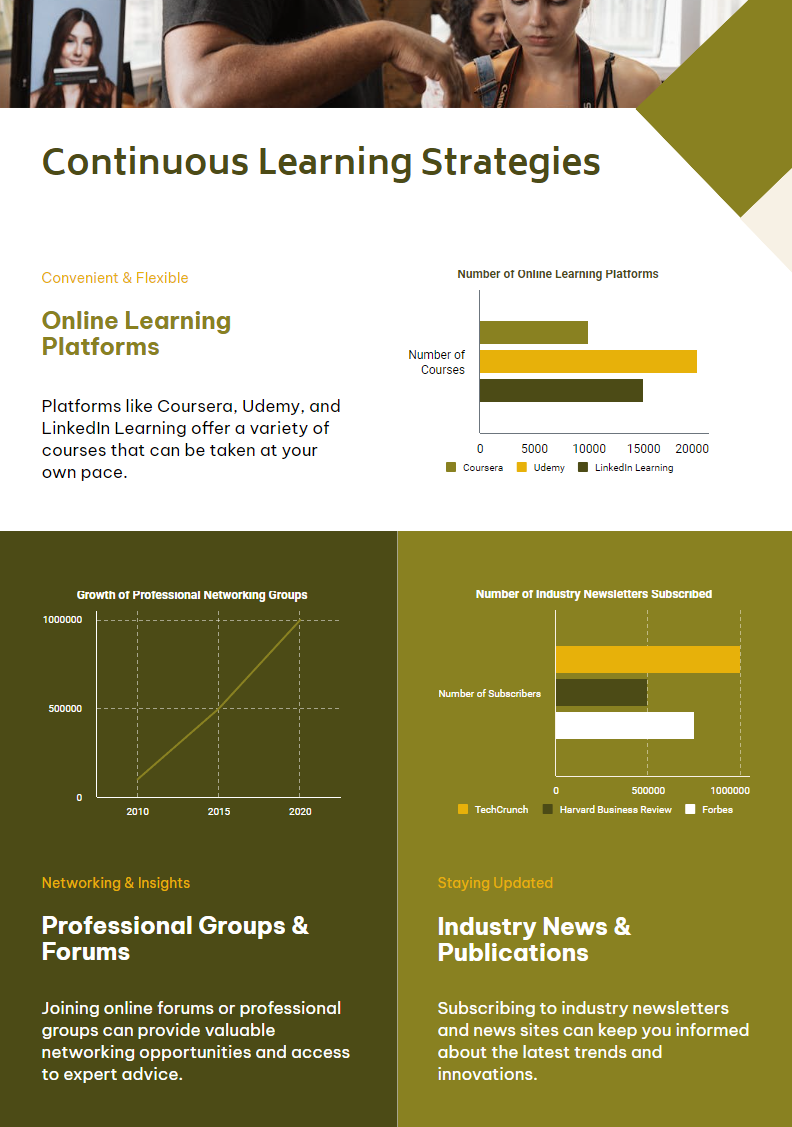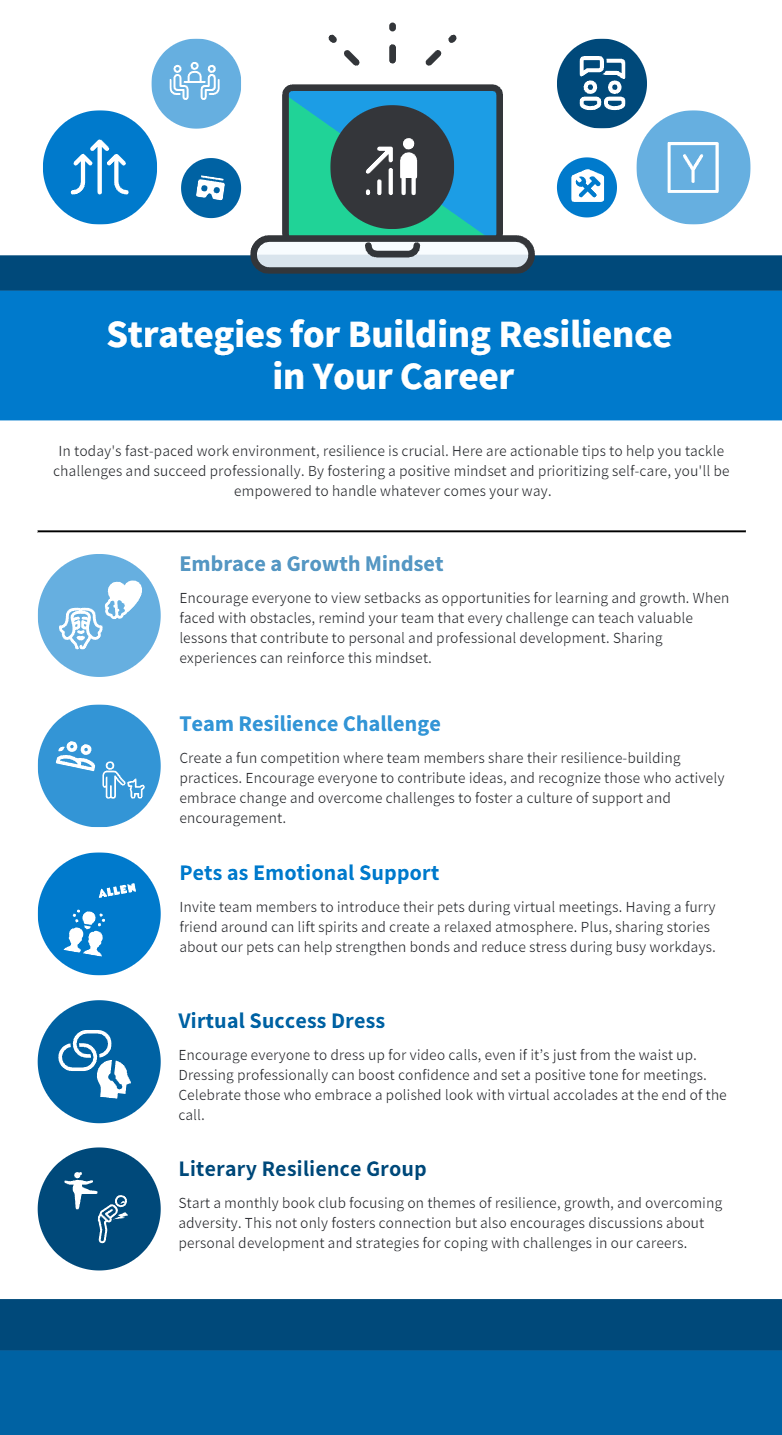Balancing a demanding career with personal growth can feel like a juggling act. As a busy professional, I’ve often found myself caught in the whirlwind of meetings, deadlines, and endless to-do lists. But prioritizing personal development isn’t just a luxury—it’s a necessity for long-term success and well-being.
In this fast-paced world, it’s crucial to carve out time for self-improvement, even when it seems impossible. Whether it’s enhancing your skills, boosting your productivity, or nurturing your mental health, personal development can transform your professional life. Let’s dive into some practical tips that can help you grow, even with a packed schedule.
Mastering Time Management: Balancing Work and Self-Improvement
Effective time management ensures that professional duties and personal growth coexist harmoniously. By strategically allocating time and optimizing daily schedules, busy professionals can address self-improvement without compromising work responsibilities.
Prioritize Tasks
Prioritizing tasks involves identifying and focusing on activities that provide the most value. Using a prioritization system like the Eisenhower Matrix helps categorize tasks into four quadrants: urgent and important, important but not urgent, urgent but not important, and neither urgent nor important. Tackling high-priority tasks first maximizes productivity and ensures essential activities receive the attention they deserve.

Schedule Dedicated Time Slots
Scheduling dedicated time slots for personal development creates a structured approach to self-improvement. Setting aside specific periods each week for activities such as reading, taking online courses, or practicing new skills integrates growth into the routine. Using tools like Google Calendar or time-blocking strategies helps maintain consistency and track progress.
Limit Distractions
Limiting distractions involves creating an environment conducive to focused work. Turning off non-essential notifications, setting specific times for email checks, and creating a designated workspace minimizes interruptions. Implementing techniques like the Pomodoro Technique, which involves working in focused intervals followed by short breaks, enhances concentration and productivity.
Utilize Technology
Utilizing technology aids in efficient time management. Productivity apps like Trello, Asana, and Todoist facilitate task organization and project tracking. Online learning platforms such as Coursera, Udemy, and LinkedIn Learning offer flexible learning options that fit into busy schedules. By leveraging these tools, professionals can streamline both work and personal development tasks.
Delegate When Possible
Delegating tasks when possible frees up valuable time for self-improvement. Identifying tasks that others can handle and assigning them accordingly allows busy professionals to focus on higher-priority activities. Effective delegation involves clear communication and selecting capable team members who can manage tasks efficiently.
Reflect and Adjust
Regularly reflecting and adjusting time management strategies ensures continuous improvement. Reviewing weekly achievements and setbacks helps identify areas for enhancement. Making necessary adjustments to schedules and priorities based on these reflections keeps the personal development journey aligned with professional responsibilities.
Incorporating Self-Care
Incorporating self-care into daily routines supports overall well-being and productivity. Activities like exercise, meditation, and proper sleep contribute to physical and mental health. Integrating self-care practices into the schedule ensures sustained energy and a balanced lifestyle, enabling professionals to perform at their best.
Set Realistic Goals
Setting realistic goals provides a clear direction for personal development efforts. Establishing specific, measurable, achievable, relevant, and time-bound (SMART) goals creates a roadmap for progress. Breaking larger goals into smaller, manageable tasks makes the journey less overwhelming and more attainable.
Mindfulness Techniques for Stress Reduction in the Workplace
Incorporating mindfulness techniques into daily routines can significantly reduce workplace stress. Mindfulness involves being fully present in the moment and can help improve focus and mental clarity.
Breathing Exercises
Breathing exercises are simple yet effective for stress reduction. Techniques like deep breathing and the 4-7-8 method help calm the mind and body. For example, taking a deep breath in for 4 seconds, holding it for 7 seconds, and exhaling for 8 seconds can be practiced during short breaks. This technique promotes relaxation and reduces anxiety.
Meditation Practices
Meditation practices are essential for sustaining mindfulness. Even a few minutes of meditation can refocus the mind. Guided meditation apps like Headspace and Calm offer short sessions tailored for busy professionals. Practicing meditation regularly improves emotional well-being and enhances concentration.
Mindful Breaks
Mindful breaks throughout the workday replenish mental energy. Taking a few minutes to disconnect from work and practice mindfulness can alleviate stress. Whether it’s a short walk, a few stretches, or simply closing your eyes and focusing on your breath, these mindful breaks help reset your focus.
Body Scans
Body scans increase body awareness and relaxation. During a body scan, attention is directed to different parts of the body, noticing sensations without judgment. This practice helps release tension and brings attention back to the present moment. Apps and guided recordings are useful for leading body scan exercises.
Journaling
Journaling allows reflection and stress relief. Writing down thoughts and feelings at the end of the day clears the mind and processes emotions. Reflective journaling promotes self-awareness and identifies stressors, aiding in developing strategies to manage them.
Mindful Listening
Mindful listening enhances communication and reduces misunderstandings. Paying full attention to colleagues during conversations shows respect and improves relationships. By focusing entirely on the speaker and avoiding distractions, you cultivate a more mindful and harmonious workplace environment.
Implementing these mindfulness techniques helps busy professionals manage stress more effectively, leading to a healthier, more productive work life.

Continuous Learning: Strategies for Professional Growth on a Tight Schedule
Engaging in continuous learning, even when busy, is crucial for professional growth. Integrating learning into daily routines ensures consistent progress.
Leverage Online Courses
Enroll in online courses to learn new skills conveniently. Platforms like Coursera, Udemy, and LinkedIn Learning offer flexible learning schedules. These resources allow you to watch short modules during breaks or commute times, maximizing your availability.
Listen to Educational Podcasts
Incorporate podcasts into daily activities. Listening to industry-relevant podcasts while commuting, exercising, or during other routine tasks can provide valuable insights without needing extra time. Notable examples include “The Tim Ferriss Show,” “Harvard Business Review IdeaCast,” and “Smart Passive Income.”
Join Professional Groups
Participate in online forums or professional groups. Communities on LinkedIn or industry-specific forums offer valuable networking opportunities and access to expert advice. Active engagement in these groups can keep you updated on industry trends and best practices.
Read Industry News
Subscribe to industry newsletters and news sites. Brief daily reads of sites like TechCrunch, Harvard Business Review, or specialized trade journals keep you informed on the latest trends and innovations. This habit requires only a few minutes each day.
Attend Webinars and Virtual Conferences
Schedule time for webinars and virtual conferences. Events hosted by industry leaders provide insights into new developments and best practices, often allowing live interaction and Q&A sessions. Signing up for relevant events ensures you don’t miss critical updates in your field.
Use Mobile Learning Apps
Download educational apps like Duolingo for language skills or Khan Academy for various subjects. These apps offer bite-sized lessons, making it easy to fit learning into short periods throughout the day.
Set Learning Goals
Define specific learning objectives. Setting clear goals, such as mastering a new software tool or completing a certification, helps maintain focus and track progress. Use tools like Trello or Asana to manage and visualize your goals.
Implement Microlearning
Adopt microlearning strategies. Break down topics into small, manageable segments. This approach can include watching a five-minute video, reading a short article, or completing a quick quiz. Microlearning fits seamlessly into tight schedules, ensuring continuous progress.
By integrating these strategies, busy professionals can foster continuous learning, enhancing their skills and staying competitive in their fields.

Building Resilience: Overcoming Challenges in a Fast-Paced Career
Facing challenges in a fast-paced career is inevitable, and building resilience is key to navigating these hurdles effectively. Resilience, the ability to bounce back from setbacks and adapt to adversity, is crucial for maintaining productivity and mental well-being. Here are some proven strategies to help build resilience:
Maintain a Positive Mindset
A positive mindset can significantly influence how you handle stressful situations. If you focus on solutions rather than problems, you’ll find it easier to overcome obstacles. Try to reframe challenges as opportunities for growth instead of insurmountable barriers.
Develop Strong Relationships
Connections with colleagues, mentors, and peers offer emotional support and practical advice. When facing difficulties, lean on your network for guidance and encouragement. Building these relationships can foster a sense of community and reduce feelings of isolation.
Practice Self-Compassion
Be kind to yourself during tough times. Recognize your efforts and acknowledge that everyone makes mistakes. Self-compassion helps reduce self-criticism and fosters a healthier mindset, making it easier to recover from setbacks.
Invest in Personal Development
Continually improving your skills and knowledge boosts confidence. Taking courses, attending workshops, and seeking feedback from peers can enhance your capabilities, making you better equipped to handle the demands of your career.
Set Realistic Goals
Establish clear, attainable goals to keep yourself focused and motivated. Break larger objectives into smaller, manageable tasks to avoid feeling overwhelmed. This approach can create a sense of achievement and progress, even during challenging periods.
Utilize Stress-Reduction Techniques
Implement stress-reduction techniques into your daily routine. Practices like deep breathing, meditation, and mindful breaks can alleviate stress and improve resilience. Regular exercise and adequate sleep also play vital roles in maintaining mental and physical health.
Learn from Experience
Reflect on past experiences to identify lessons learned. Understanding what worked and what didn’t can provide valuable insights for future challenges. Use these insights to develop better strategies and avoid repeating mistakes.
Seek Professional Help if Needed
If stress becomes unmanageable, consider seeking help from a mental health professional. Therapy or counseling can offer strategies to cope with stress and build resilience, providing an external perspective on your challenges.
Balance Work and Personal Life
Striking a balance between professional responsibilities and personal life is essential for long-term resilience. Allocate time for hobbies, family, and relaxation to recharge and maintain overall well-being.
Integrating these strategies into your routine can bolster your resilience, enabling you to thrive in a fast-paced career. Prioritizing resilience helps not only in overcoming challenges but also in fostering long-term professional and personal growth.

Networking and Relationship Building for Career Advancement
Attend Industry Events
I attend industry events to expand my professional network. Conferences, seminars, and trade shows provide opportunities to meet industry leaders. Active participation in these events helps me stay updated on market trends and innovations.
Utilize Online Platforms
Leveraging online platforms like LinkedIn has helped me connect with professionals globally. I join groups, participate in discussions, and keep my profile updated. This increases my visibility and opens up potential career opportunities.
Follow Up Effectively
After meetings, I always follow up. Sending a thank-you email or connecting on LinkedIn can leave a lasting impression. This small gesture demonstrates professionalism and helps maintain the newly formed connection.
Seek Mentorship
I seek out mentors within my industry. A mentor provides guidance, shares valuable experiences, and offers advice. This relationship can be pivotal for career growth and development.
Offer Value in Relationships
In networking, I focus on offering value. This can mean sharing insights, providing assistance, or making introductions. When I add value to others, I build stronger, more meaningful professional relationships.
Join Professional Associations
Joining professional associations has connected me with like-minded individuals. These groups often offer resources, events, and networking opportunities tailored to specific industries. Membership can greatly enhance career prospects.
Practice Active Listening
During conversations, I practice active listening. This means paying full attention, acknowledging their points, and responding thoughtfully. Active listening helps build trust and rapport, essential for strong professional relationships.
Keep Learning
I recognize that continuous learning around networking and relationship-building practices is crucial. This involves staying current with best practices in communication and interpersonal skills. Constant improvement in these areas supports ongoing professional growth.
Leverage Social Media
I use social media to expand my network. Platforms like Twitter and Instagram can be powerful tools for connecting with industry influencers and peers. Sharing relevant content and engaging with others enhances my online presence.
Focus on these strategies aids in effective networking and relationship building. Through diligent efforts, I’ve strengthened my professional network, advanced my career, and created lasting, meaningful connections.

Frequently Asked Questions
How can I balance a demanding career with personal growth?
Balancing a career with personal growth involves prioritizing tasks, managing time efficiently, and making self-care a daily practice. Use tools like the Eisenhower Matrix to prioritize tasks, schedule time for personal development, and reduce distractions to maintain focus.
What are some effective time management strategies?
Effective time management strategies include prioritizing tasks, scheduling dedicated time slots for activities, limiting distractions, and using productivity apps. Techniques like the Eisenhower Matrix and setting SMART goals can help you manage time better.
How can I integrate personal development into a busy schedule?
Integrate personal development into your schedule by setting aside specific time slots, utilizing online learning platforms, and leveraging productivity apps. Microlearning techniques and mobile learning apps can make learning more manageable.
What are mindfulness techniques, and how do they help with stress?
Mindfulness techniques, such as meditation, breathing exercises, and journaling, help reduce stress by enhancing focus and emotional well-being. Implementing these practices into your daily routine can improve mental clarity and productivity.
Why is continuous learning important for professional growth?
Continuous learning helps you stay competitive in your field by keeping your skills up-to-date. It can be achieved through online courses, educational podcasts, and industry news, ensuring you remain informed and capable in your career.
What are some ways to build resilience in a fast-paced career?
Building resilience involves maintaining a positive mindset, developing strong support networks, practicing self-compassion, and setting realistic goals. Utilize stress-reduction techniques and learn from past experiences to navigate challenges effectively.
How can I effectively network and build professional relationships?
Effective networking involves attending industry events, using online platforms like LinkedIn, and seeking mentorship. Focus on building meaningful connections by offering value, practicing active listening, and continuously learning about networking practices.














